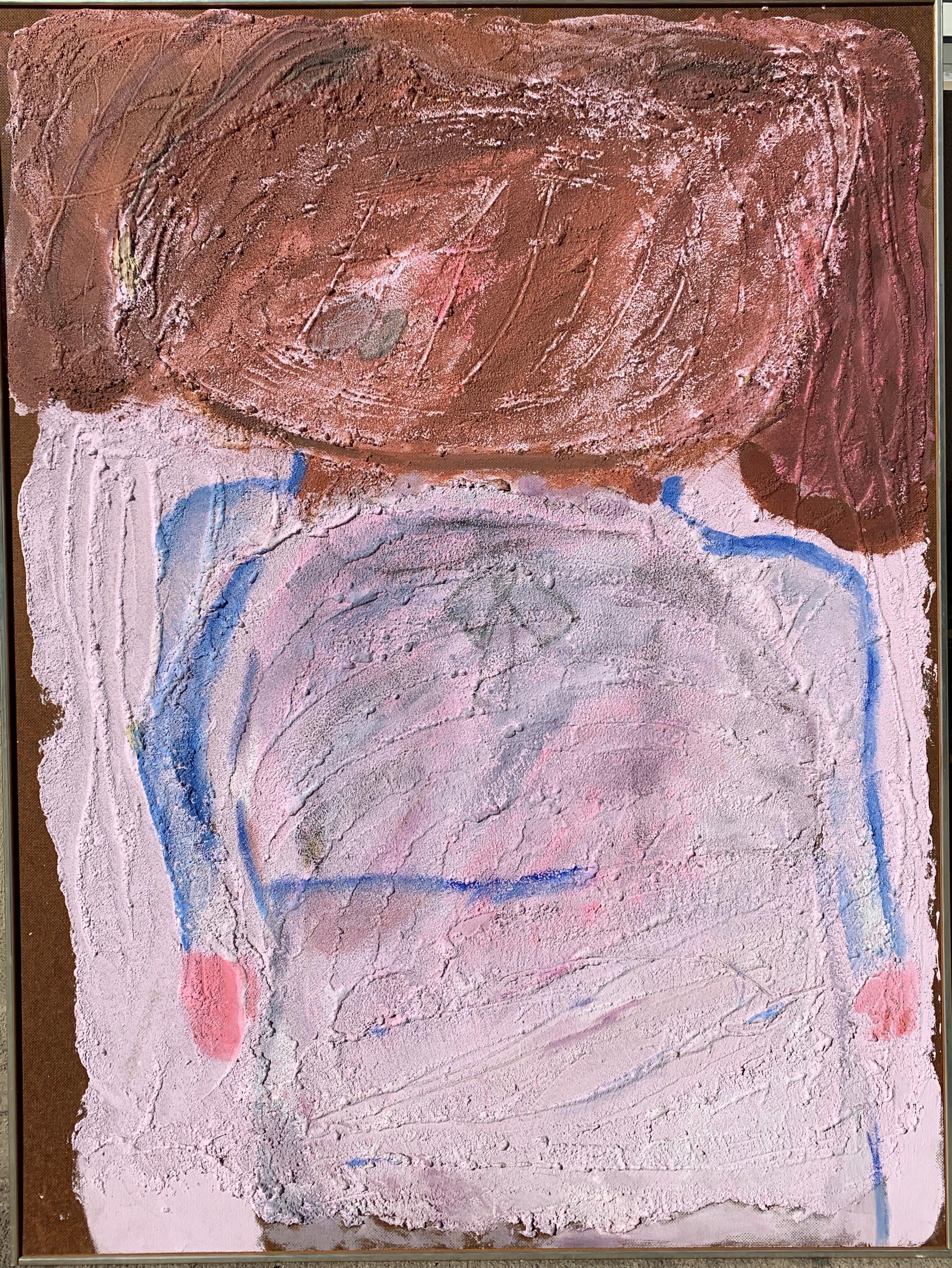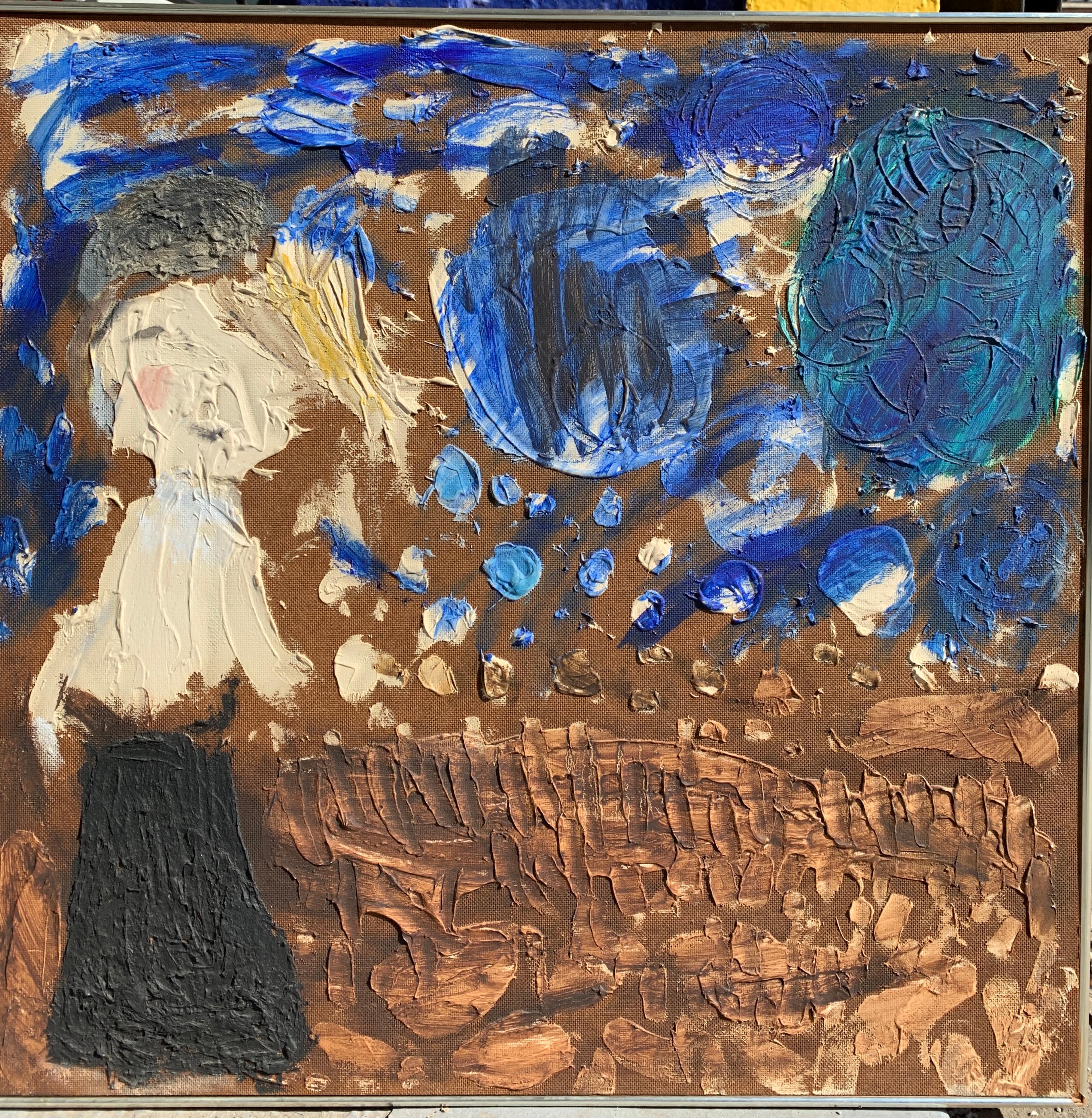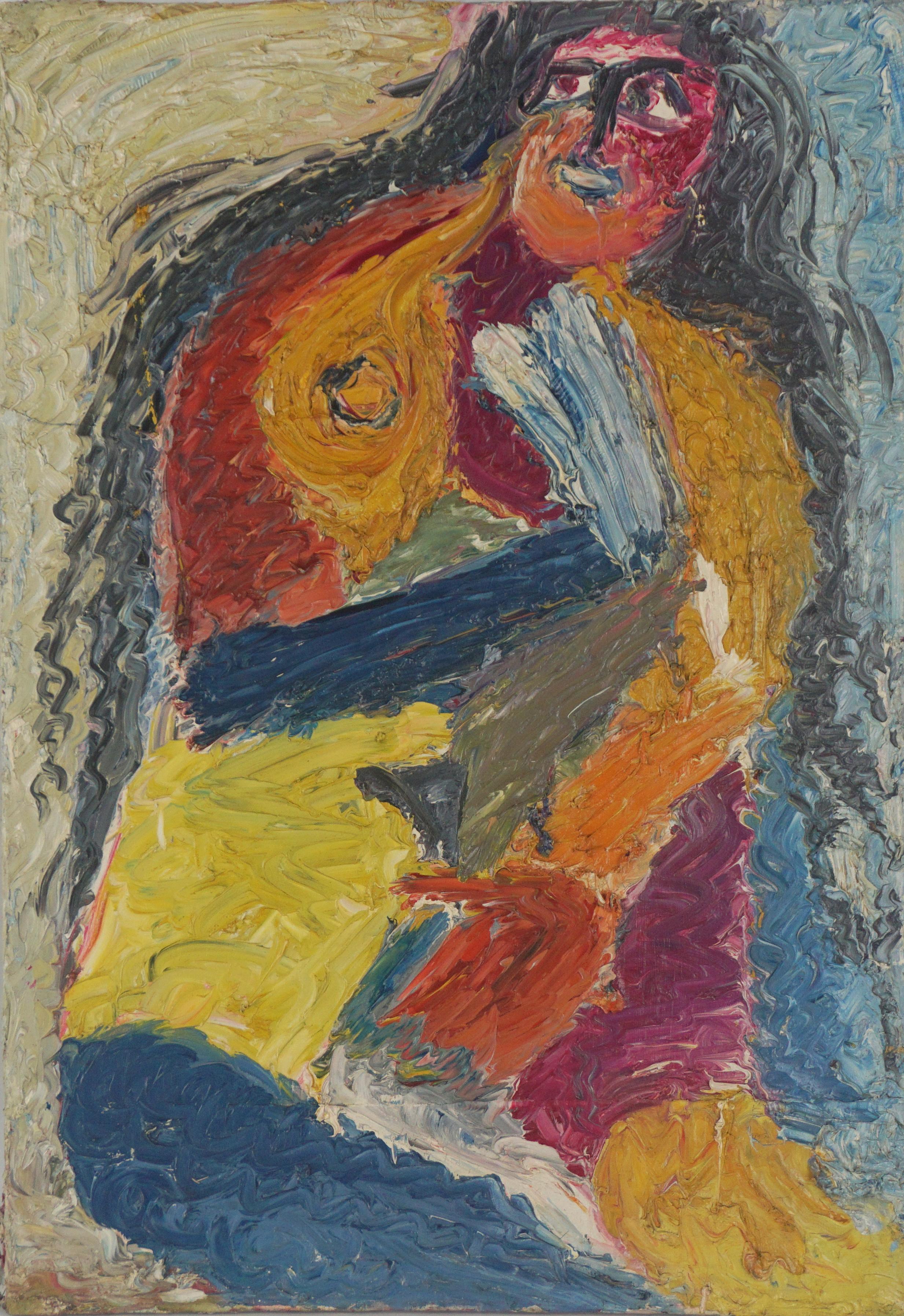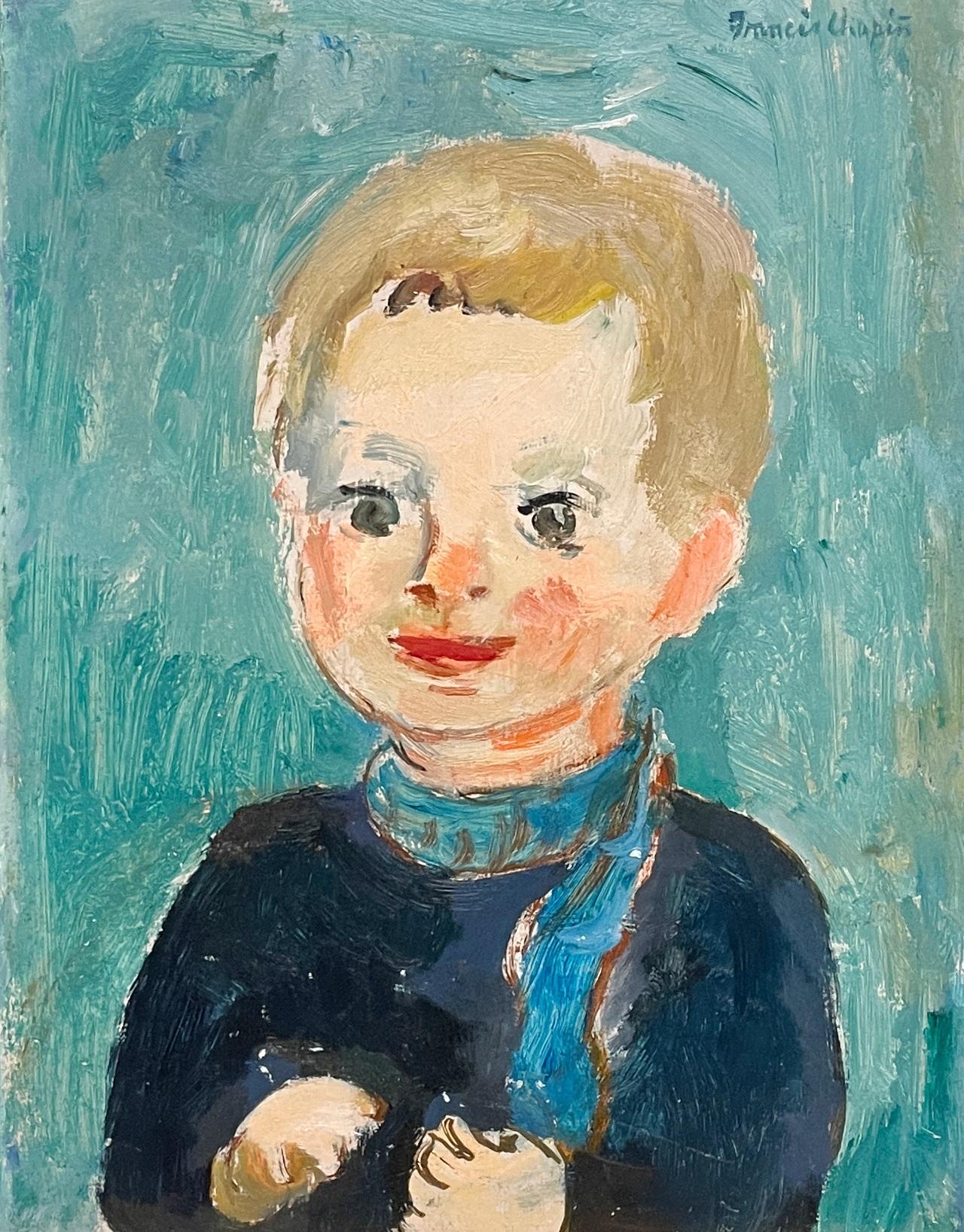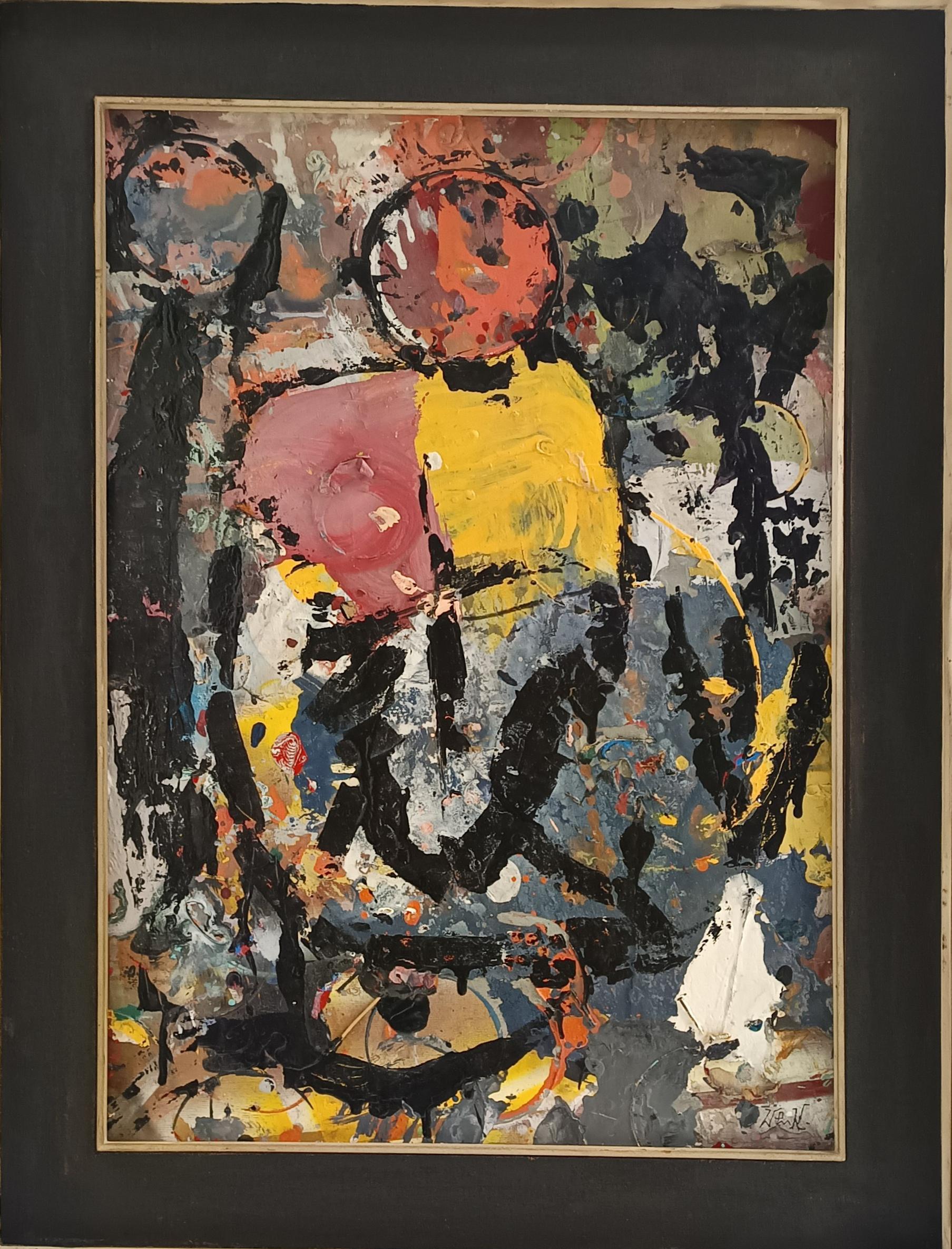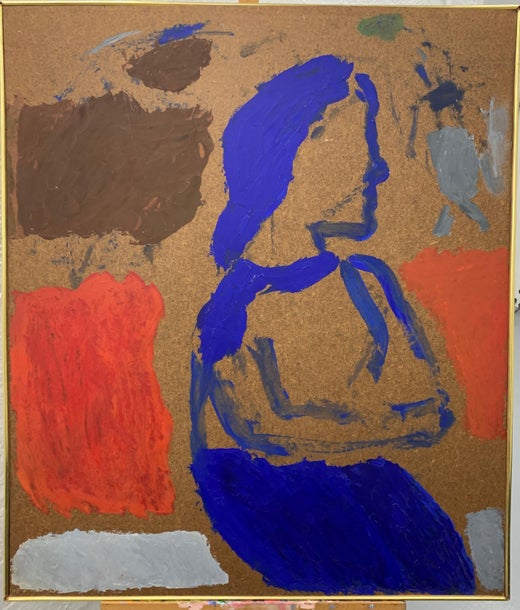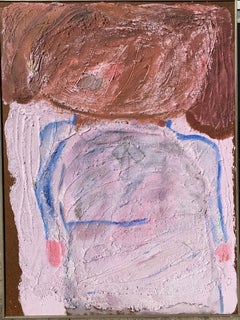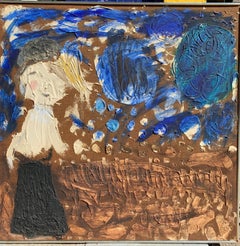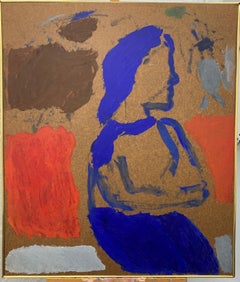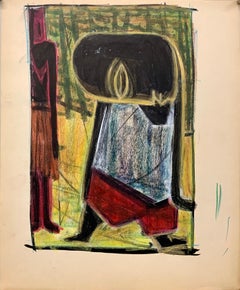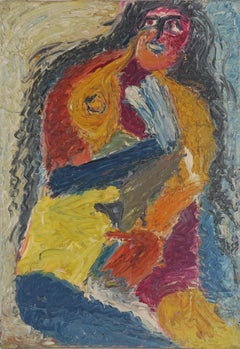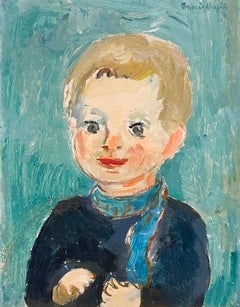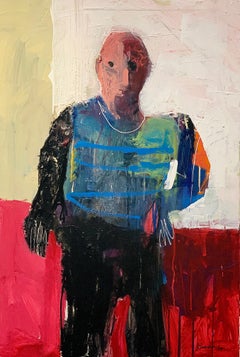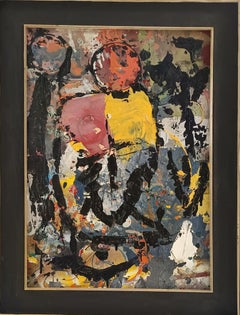Items Similar to 1950s "Boy With Mittens" Oil Impasto Figurative Painting Brooklyn Museum Artist
Want more images or videos?
Request additional images or videos from the seller
1 of 13
Sylvia Rutkoff1950s "Boy With Mittens" Oil Impasto Figurative Painting Brooklyn Museum Artistc. 1950s
c. 1950s
$14,000
£10,571.30
€12,264.88
CA$19,674.40
A$21,920.06
CHF 11,443.31
MX$266,138.70
NOK 143,834.90
SEK 135,958.92
DKK 91,555.83
About the Item
Sylvia Rutkoff (1919-2011)
Sr10-1
c.1950s
“Boy with Mittens”
Oil impasto on Masonite
36x42.5 black wood gallery frame
Signed on reverse in paint
Collection acquired from family estate
Sylvia Weinreb Rutkoff (1919-2011)
Born in Wisconsin in 1919 and painted in New York.
Arts Magazine called her work a “happy wedding of the natural image to the violent immediacy of the expressionist idiom.” She has been described as “vital” by the New York Herald Tribune and as an “outstanding colorist” by the New York Times. Her non-objective paintings of oils, sand and acrylics are done with intensity and simplicity.
She received numerous reviews including this one from the well regarded art critic, Gregory Battock: “Highly sophisticated textures that speak firmly and imaginatively contribute a lot to the Art Brut works by this artist. One thinks of a gay and colorful Dubuffet. Miss Rutkoff offers naive and primitive images in a refreshing and delightful manner”
The cache of paintings by Sylvia Rukoff was recently acquired through her great nephew. This important new discovery of American art is now being offered for sale.
1939 Hunter College in New York City, MA in Painting and Art History
1958 Art Students League
Shows Include:
Pennsylvania Academy of Fine Art
Brooklyn Museum, New York
Butler Institute of Art, Youngstown, Ohio
Hudson River Museum, Yonkers, New York
International Young Artists Exhibition, Tokyo 1962
Caravan Gallery, New York (two one-woman shows) 1961, 1963
Capricorn Gallery, New York NY
Osaka University Art Gallery, Japan
Loeb Gallery, New York University, New York, NY
Gallimaufry Gallery, Croton-On-Hudson
Women’s Interart Center
Key Gallery, Soho, New York, NY
Edward Williams Gallery, Fairleigh Dickinson University, New Jersey
National Juried Show, Summit Art Center, New Jersey
Creative Gallery, New York, NY
The Riverside Museum, New York, NY
Sylvia taught art in the summers at Lehigh University in the 60s/70s, and was the Director of the Art Workshop in the Graduate School Fairleigh Dickinson University.
She belonged to a group of artists called the Vectors, a group which included the Abstract Expressionists Ben Wilson, Frances Manacher, Rhoda Sklar, and Julius, Mary Shier and others.
- Creator:Sylvia Rutkoff (1919 - 2011, American)
- Creation Year:c. 1950s
- Dimensions:Height: 42.5 in (107.95 cm)Width: 36 in (91.44 cm)Depth: 2 in (5.08 cm)
- Medium:
- Movement & Style:
- Period:
- Condition:Very Good Condition - Minor wear consistent with age and history.
- Gallery Location:Arp, TX
- Reference Number:1stDibs: LU153328231612
Sylvia Rutkoff
Sylvia Weinreb Rutkoff (1919-2011)
Born in Wisconsin in 1919 and painted in New York. Arts Magazine called her work a “happy wedding of the natural image to the violent immediacy of the expressionist idiom.” She has been described as “vital” by the New York Herald Tribune and as an “outstanding colorist” by the New York Times. Her non-objective paintings of oils, sand and acrylics are done with intensity and simplicity. She received numerous reviews including this one from the well regarded art critic, Gregory Battock: “Highly sophisticated textures that speak firmly and imaginatively contribute a lot to the Art Brut works by this artist. One thinks of a gay and colorful Dubuffet. Miss Rutkoff offers naive and primitive images in a refreshing and delightful manner” The cache of paintings by Sylvia Rukoff was recently acquired through her great nephew. This important new discovery of American art is now being offered for sale. 1939 Hunter College in New York City, MA in Painting and Art History
1958 Art Student League Shows Include: Pennsylvania Academy of Fine Art
Brooklyn Museum, New York
Butler Institute of Art, Youngstown, Ohio
Hudson River Museum, Yonkers, New York
International Young Artists Exhibition, Tokyo 1962
Caravan Gallery, New York (two one-woman shows) 1961, 1963
Capricorn Gallery, New York NY
Osaka University Art Gallery, Japan
Loeb Gallery, New York University, New York, NY
Gallimaufry Gallery, Croton-On-Hudson
Women’s Interart Center
Key Gallery, Soho, New York, NY
Edward Williams Gallery, Fairleigh Dickinson University, New Jersey
National Juried Show, Summit Art Center, New Jersey
Creative Gallery, New York, NY
The Riverside Museum, New York, NY Sylvia taught art in the summers at Lehigh University in the 60s/70s, and was the Director of the Art Workshop in the Graduate School Fairleigh Dickinson University. She belonged to a group of artists called the Vectors, a group which included the Abstract Expressionists Ben Wilson, Frances Manacher, Rhoda Sklar, and Julius, Mary Shier and others.
About the Seller
5.0
Vetted Professional Seller
Every seller passes strict standards for authenticity and reliability
Established in 2015
1stDibs seller since 2021
102 sales on 1stDibs
Typical response time: 3 hours
Associations
Association of Women Art Dealers
- ShippingRetrieving quote...Shipping from: Arp, TX
- Return Policy
Authenticity Guarantee
In the unlikely event there’s an issue with an item’s authenticity, contact us within 1 year for a full refund. DetailsMoney-Back Guarantee
If your item is not as described, is damaged in transit, or does not arrive, contact us within 7 days for a full refund. Details24-Hour Cancellation
You have a 24-hour grace period in which to reconsider your purchase, with no questions asked.Vetted Professional Sellers
Our world-class sellers must adhere to strict standards for service and quality, maintaining the integrity of our listings.Price-Match Guarantee
If you find that a seller listed the same item for a lower price elsewhere, we’ll match it.Trusted Global Delivery
Our best-in-class carrier network provides specialized shipping options worldwide, including custom delivery.More From This Seller
View All1950s "The Schoolgirl" Oil and Sand Figurative Painting NYC Brooklyn Museum
By Sylvia Rutkoff
Located in Arp, TX
Sylvia Rutkoff (1919-2011)
26-1
"The Schoolgirl"
c.1950s
Oil paint, sand on Masonite
36x48 wood period frame
Unsigned
Collection acquired from family estate
Sylvia Weinreb Rutkoff (...
Category
Mid-20th Century Modern Abstract Paintings
Materials
Gesso, Masonite, Oil
"Girl with Beret" Impasto Mid Century Abstract Expressionism NYC Female Artist
By Sylvia Rutkoff
Located in Arp, TX
Sylvia Rutkoff (1919-2011)
Sr9-1
c.1950s
"Girl with Beret"
Impasto oil paint on Masonite
32x32 period frame
Collection acquired from family estate
*Custom framing available for addit...
Category
Mid-20th Century Abstract Expressionist Figurative Paintings
Materials
Masonite, Oil
"Crossed Arms" Mid Century Abstract Expressionist NYC Female Artist
By Sylvia Rutkoff
Located in Arp, TX
Sylvia Rutkoff (1919-2011)
Sr5-1
c.1960s
“Crossed Arms”
Acrylic on Masonite
36x42 period frame
Unsigned
Collection acquired from family estate
Category
Mid-20th Century Abstract Expressionist Landscape Paintings
Materials
Masonite, Oil
1950s "Mark" Oil Pastel and Gouache Figurative Painting NYC Modern Mid Century
By Donald Stacy
Located in Arp, TX
Donald Stacy
"Mark"
c.1950s
Oil pastel and gouache paint on paper
14x17" unframed
Unsigned
Came from artist's estate
Donald Stacy (1925-2011) New Jersey
Studied: Newark School of ...
Category
Mid-20th Century Modern Figurative Paintings
Materials
Paper, Oil Pastel, Gouache
"Asian Woman I" American Modernist Figurative Painting Académie Julian
By Jack Hooper
Located in Arp, TX
Jack Hooper
"Asian Woman I"
10-1990
Acrylic and conte crayon on rag paper
28"x42.25 unframed
Signed and dated in pencil lower right
Jack Meredith Hooper (August 26, 1928 - January ...
Category
1990s American Modern Figurative Paintings
Materials
Acrylic, Rag Paper, Conté
$1,800 Sale Price
40% Off
1950s "Yellow Cubist Figure" Abstract Figurative Painting
Located in Arp, TX
From the estate of Jerry Opper & Ruth Friedmann Opper
Yellow Cubist FIgure
c. 1940-1950's
Gouache
15" x 18", silver wood frame 16"x19"
Unsigned
This striking gouache painting featur...
Category
1950s Cubist Abstract Paintings
Materials
Gouache
You May Also Like
Original Abstract Expressionist Heavy Impasto Oil on Canvas - "Apres Ski"
Located in Soquel, CA
Original Heavy Impasto Abstract Expressionist Oil on Canvas "Apres Ski"
Abstract expressionist figurative composition of a woman holding a beverage by California artist Harald "Harr...
Category
1970s Post-Modern Figurative Paintings
Materials
Canvas, Oil, Stretcher Bars
A Delightful, 1950s Mid-Century Modern Portrait of a Young Boy in Blue Scarf
By Francis Chapin
Located in Chicago, IL
A Delightful, 1950s Mid-Century Modern Portrait, "Boy in Blue Scarf" by Noted Chicago Artist, Francis Chapin (Am. 1899-1965). Artwork Size: 11 3/4” x 9 1/4” (Framed size: 15 1/2” ...
Category
Mid-20th Century American Modern Figurative Paintings
Materials
Masonite, Oil
Personaje, acrylic figurative painting of seated man
Located in San Diego, CA
"Personaje" (seated) acrylic on canvas painting by Southern California artist Mike Rivero. Personaje (sitting) is painted in blue, green, pink, red, black white, orange, set on a tau...
Category
2010s Contemporary Figurative Paintings
Materials
Canvas, Acrylic
$2,800 Sale Price
23% Off
"Volto con Figure" by Enzio Wenk, 2019 - Acrylic on Wood, Figurative Abstract
By Enzio Wenk
Located in Bresso, IT
Translated title: "Face with figures".
Acrilic paint on beech panel.
The frame is included.
Category
2010s Neo-Expressionist Abstract Paintings
Materials
Acrylic, Wood Panel
A Charming, 1950s Expressionist Portrait of a Young Girl by Francis Chapin
By Francis Chapin
Located in Chicago, IL
A Charming, 1950s Expressionist Portrait of a Young Girl by Noted Chicago Modern Artist, Francis Chapin (Am. 1899-1965). A Wonderful and intimate Mid-Century studio portrait of a yo...
Category
Mid-20th Century American Modern Figurative Paintings
Materials
Masonite, Oil
Kids Play - acrylic on canvas
By Amy Smith
Located in West Hollywood, CA
Amy Smith is a self-educated contemporary artist. Born in New Jersey, she moved to Los Angeles where she found inspiration, mentors, and support in the Street Art community.
In her ...
Category
2010s Contemporary Abstract Paintings
Materials
Canvas, Acrylic
